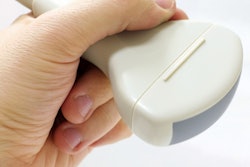Tuesday, November 27 | 10:30 a.m.-10:40 a.m. | SSG01-01 | Room S406A
Screening breast ultrasound performs well over the long haul, which is good news in an era when more U.S. states are enacting breast density notification legislation that recommends women with dense tissue undergo supplemental screening.In this Tuesday morning scientific session, Dr. Stamatia Destounis of Elizabeth Wende Breast Care in Rochester, NY, will present data from a study that included 23,878 screening ultrasound exams acquired between 2013 and 2017 in patients with heterogeneously dense or extremely dense breast tissue. The group categorized the data by year to assess the modality's performance over time, calculating cancer detection and biopsy rates and the positive predictive value (PPV) for biopsy for findings identified only on ultrasound.
Destounis and colleagues found the following:
- The cancer detection rate increased in the first three years, from 1.4 per 1,000 exams in 2013 to 3.6 per 1,000 exams in 2015. It then decreased to 2.4 per 1,000 exams in 2016 and 2.2 per 1,000 exams in 2017.
- The biopsy rate decreased over the time frame, from 2.9% in 2013 to 1.0% in 2017.
- The PPV for biopsy initially increased dramatically (from 5% in 2013 to 20% in 2014) and then declined to 18.8% in 2015 and 16.2% in 2016, before increasing again to 22.3% in 2017.
The findings shed more light on ultrasound's performance as a supplemental screening tool, especially as more states enact breast density notification legislation, Destounis and colleagues wrote.
"As policies continue to change and center around individualized medicine, understanding the performance and value of ultrasound will be helpful for facilities as they continue to adopt improved screening practices and modalities for women with dense breast tissue," the group concluded.




















